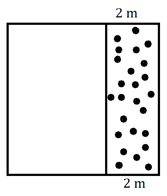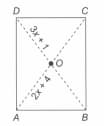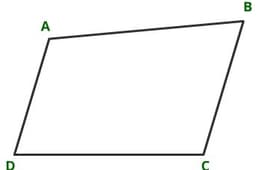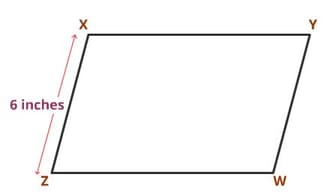“The diagonals of a parallelogram are always equal to each other". Is this statement true or false?
Important Questions on Understanding Elementary Shapes
The perimeter of a rectangle is 42 cm. If its diagonal is 15 cm long, find the breadth of the rectangle.
(A) 8 cm.
(B) 10 cm.
(C) 9 cm.
(D) 7 cm.
Land is acquired for road widening from a square ground, as shown in the figure. The width of the acquired land is . Area of the remaining ground is . What is the shape of the remaining ground?

X, Y and Z are the midpoints of the sides of ∆PQR. If the perimeter of ∆XYZ is 32 units, find the perimeter of ∆PQR.
(A) 128 units
(B) 64 units
(C) 96 units
(D) 160 units
A square can be thought of as a special rectangle.
Which quadrilateral is formed when all sides of a parallelogram are made to be equal and all its interior angles are right angles?
Which quadrilateral is formed when a parallelogram has all four sides equal and interior angles are not $ {90}^{0}$ ?
Define: a trapezium
Carefully observe! Is the given figure, a parallelogram?
is a rectangle, its diagonals meet at . Find , if and .

In the parallelogramXYWZ, length of side XY is double the length of side YW. Length of the side ZW = _____ inches.



